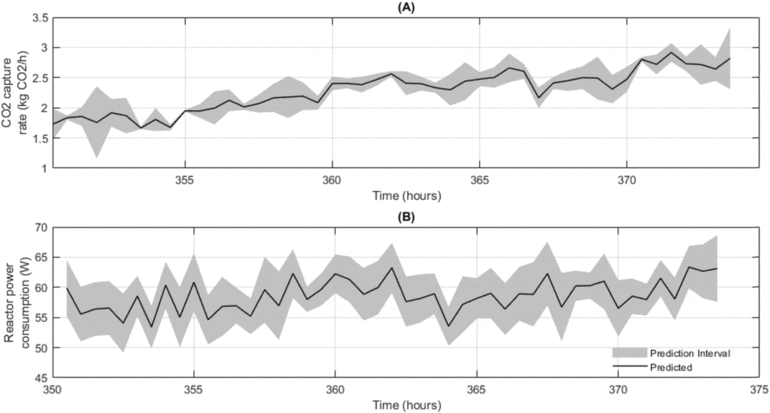TL;DR:
- University of Surrey research unveils AI integration in carbon capture technology.
- AI algorithms improve CO2 capture efficiency by 16.7% while reducing energy consumption by 36.3%.
- A packed bubble column reactor plays a central role in converting CO2 into bicarbonate.
- Data-driven surrogate dynamic models enhance prediction accuracy.
- LSTM-based models forecast wind energy availability and incoming flue gas CO2 concentrations.
- Carbon capture systems can adapt to changing environmental conditions, offering significant energy savings.
- Broader applications beyond enhanced weathering are foreseen.
- Real-time data-driven system achieves a 16.7% boost in CO2 capture rates and lowers reliance on renewable energy to 56.6%.
Main AI News:
In the ever-evolving landscape of environmental advancements, artificial intelligence (AI) is emerging as a powerful ally. Researchers at the University of Surrey have unveiled groundbreaking findings in the realm of carbon capture technology, a critical component in combatting climate change by curbing carbon dioxide (CO2) emissions from power plants. The significance of this breakthrough lies in its potential to revolutionize the efficiency of carbon capture while significantly reducing energy consumption.
The heart of this pioneering system is a packed bubble column (PBC) reactor, serving as the interface between freshwater infused with crushed limestone and CO2-laden flue gases. Through this innovative process, CO2 is transformed into bicarbonate, offering a sustainable solution to emissions control. However, what truly sets this research apart is the seamless integration of AI algorithms, which have propelled carbon capture technology to unprecedented levels of efficiency.
Harnessing the Power of AI
By employing cutting-edge machine learning techniques, the research team developed data-driven surrogate dynamic models that can predict the reactor’s CO2 capture rate and power consumption with remarkable accuracy. These models, trained using data from physics-based simulations, serve as the guiding force behind the system’s optimization.
Additionally, the researchers implemented separate long short-term memory (LSTM)–based models to forecast wind energy availability and incoming flue gas CO2 concentrations. This integration of AI-driven predictions enables the system to make informed decisions, adapting its operations based on variables such as CO2 levels and wind speeds.
A Paradigm Shift in Carbon Capture
One of the key takeaways from this study is the departure from the conventional rigidity of carbon capture systems. Typically, these systems operate at a constant rate, irrespective of external environmental changes. However, this research has demonstrated that teaching the system to make incremental adaptations can yield substantial energy savings and a more effective carbon capture process.
The Potential for Broader Applications
While the study primarily focused on enhanced weathering, its implications extend far beyond this specific application. The AI model developed can be a valuable tool for anyone seeking to capture and store CO2 more efficiently with significantly reduced energy requirements.
A Game-Changer in Carbon Capture Efficiency
Through the integration of prediction models and AI algorithms, this revolutionary system has proven its ability to modify water pumping levels based on real-time data, resulting in substantial energy conservation. In just one month, the system achieved a remarkable 16.7% increase in carbon dioxide capture rates when compared to traditional static methods. Moreover, the reliance on renewable energy sources plummeted from an average of 92.9% to a mere 56.6%, marking a significant step toward sustainable carbon capture technology. This groundbreaking research underscores the immense potential of AI in advancing environmental solutions, offering hope in the fight against climate change.
Conclusion:
The integration of AI in carbon capture technology, as demonstrated by the University of Surrey’s research, holds significant promise for the market. This breakthrough not only enhances the efficiency of carbon capture processes but also reduces energy consumption, making it a compelling solution for industries striving to meet environmental sustainability goals. The adaptability of AI-driven systems opens doors to broader applications, signaling a transformative shift in the market towards more efficient and sustainable carbon capture solutions.

